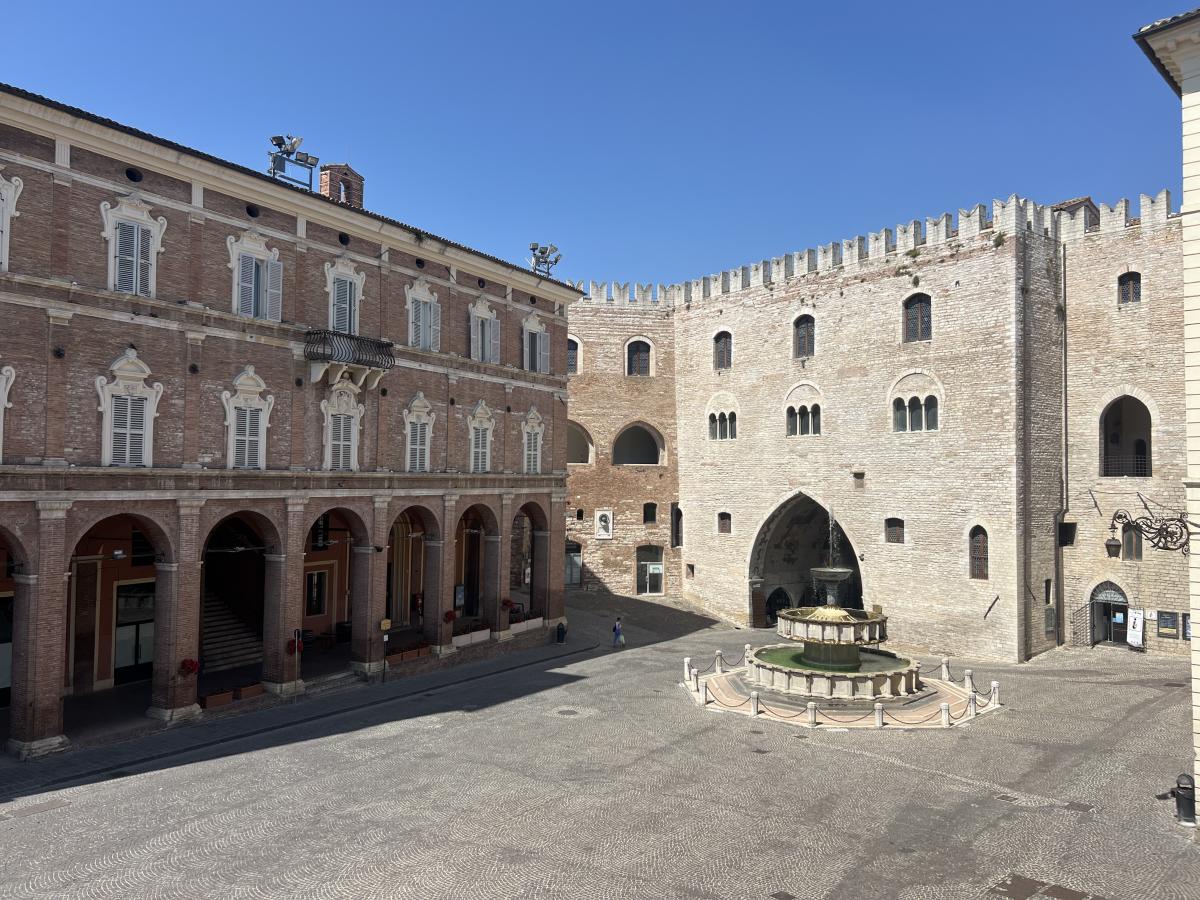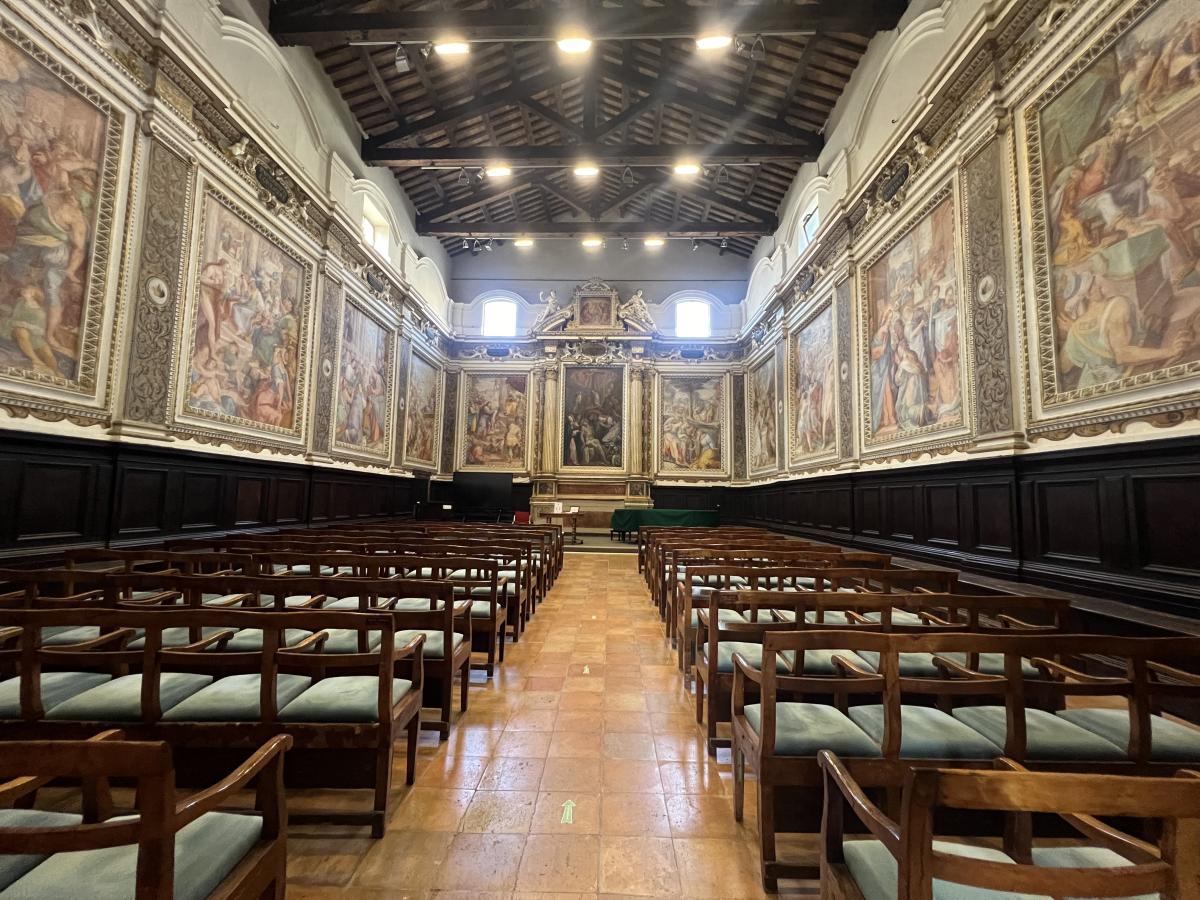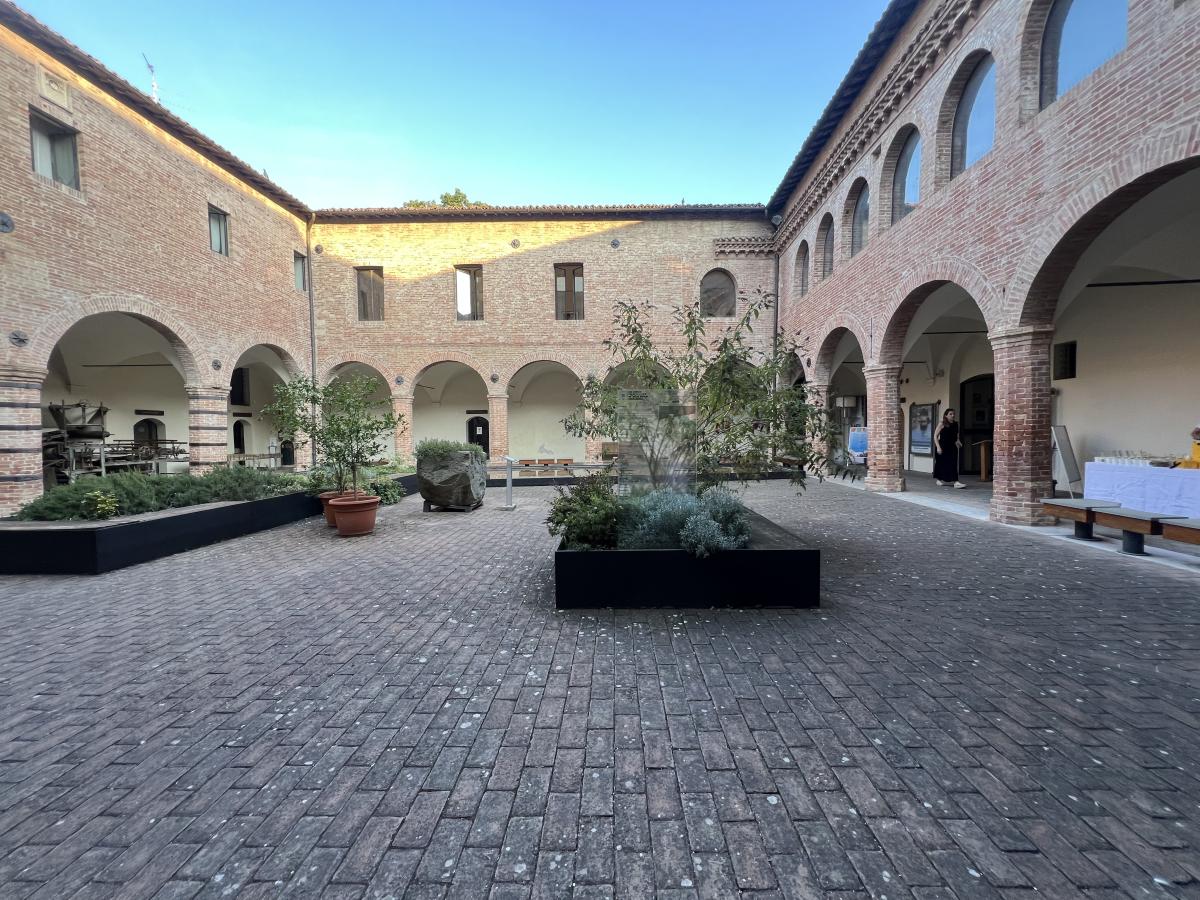
Fabriano
Located at 325 meters above sea level, in a valley surrounded by the mountains of the central Umbrian-Marche Apennines, Fabriano is one of the centres of greatest historical interest in the Marche region and has a vast territory (almost 270 km²), which makes it one of the largest municipalities in Italy.
Fabriano is renowned worldwide for its paper production and watermarking; this invention was introduced by papermakers from Fabriano in the second half of the thirteenth century.
Paper had arrived in Europe through the Arabs, but it had begun to be used very slowly. The people of Fabriano, the first in Italy, improved the manufacturing technique by adapting the machine already used for fulling wool and transforming it into the hydraulic pile with multiple hammers, a device for preparing the fibrous paste with which to make paper. Another important innovation was the sizing technique with animal gelatine. Soon, thanks also to local merchants, the city became known in Europe for the production of watermarked paper and is still now known as “ City of the Paper”
The town is one of UNESCO's Creative Cities; in 2013, it was included in the category Crafts and folk arts, because of the production of handmade paper.
So proud is the town of its traditional industry that it has dedicated an interesting modern museum to it - you'll find the Museo della Carta (Paper and watermark museum) in the former monastery of San Domenico. The Paper and Watermark Museum traces the town's fascinating history of this important craft, with centuries-old machinery and well-preserved manuscripts illustrating its prominence over the ages
Fabriano has a vast historical and artistic heritage of medieval palaces and towers, churches and oratories (Oratorio della Carità). The Cathedral of San Venanzio, with its 14th-century details, is one of the symbols of the city. Among the most important buildings besides the Cathedral is the Palazzo del Podestà, a medieval-era structure positioned in Town Hall Square, the centre of the city. Inside the square is the Palazzo del Comune, built around 1350 and the fountain called Sturinalto (because it “sends the water up”), which faces the palace and recalls the Fontana Maggiore in Perugia. The courtyard of the palace, on the other hand, leads to the Teatro Gentile, dedicated to one of the most celebrated painters of Italian Gothic art, Gentile da Fabriano. The south side of the square, on the other hand, is occupied by the Bishop’s Palace, once the seat of the Priors, and at its side is the Civic Tower of Fabriano.

Piazza del Comune - Plazzo del Podestà

Oratorio della Carità
VENUE: Museum of Paper and Watermark
Largo Fratelli Spacca, 2, Fabriano (AN)

HOW TO REACH FABRIANO
By plane
- Ancona airport ‘Raffaello Sanzio’ – AOI – It is the closest airport to Fabriano. From the airport, you can reach Fabriano by train (1 hour). For the train timetables, consult the website https://www.trenitalia.com/en.html. The train stop at the airport is called "Castelferretti-Falconara aeroporto"
- Roma Fiumicino airport – FCO. From the airport, you can reach Fabriano by train in 3,5 hours. At the airport there is the train “Leonardo express” that connects the airport to the central station Roma Termini in 30 min. The connection is active from 05.38 to 00.23, service operates every 15 minutes. Train timetables from Roma Termini to Fabriano are available on the website https://www.trenitalia.com/en.html.
- Roma Ciampino airport- CIA. At the airport you can reach Roma Termini station by bus in 40 min (https://www.adr.it/web/aeroporti-di-roma-en/pax-cia-to-from). Train timetables from Roma Termini to Fabriano are available on the website https://www.trenitalia.com/en.html
- Bologna airport ’G. Marconi’- BLQ.. From the airport, you can reach Fabriano by train in 4 hours. At the airport, there is the train "Marconi Express" that connects the airport to the central station "Bologna centrale". The connection is active from 5:40 a.m to midnight with up to 8 departures per hour (for information: https://www.marconiexpress.it/en). Train timetables from Bologna centrale to Fabriano are available on the website https://www.trenitalia.com/en.html (change in Ancona station to Fabriano)
